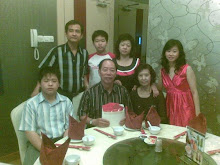OCZ Summit MLC SSD
Anyone familiar with articles published at Benchmark Reviews is very well aware of our obsession with Solid State Drive technology. They're complex, and every SSD is different than the next. Nothing like Hard Disk Drive technology, which improves as spindle speed and cache buffer are increased, SSDs are the future and because of this their internal architecture is constantly evolving. This is why we offer so much coverage on the topic: it's interesting and exciting. Plus, they can turn the average computer system into a roaring beast.
The retail consumer market first received a myriad of introductory SSD controller technologies, which included a little something from everyone. Fusion-io, Mtron, MemoRight, and RunCore offered their proprietary chips beside a smattering of Samsung and JMicron combinations, and Indilinx came to the table a little later. SanDisk, Solidata, and pureSilicon have all made attempts and becoming the major name in the SSD industry, just like SandForce and Texas Memory Systems will also soon try. But at the end of the day, it's not the name that counts, it's the final product. In that regard, only Samsung and Indilinx have seized consumer attention with their products.
Samsung makes the DRAM modules found in nearly all popular SSD products today, with Elpida and Qimonda also adding their name to cache buffer parts. JMicron, Indilinx, and Samsung engineer many of the most well-known SSDs on the market, with OEM companies adding their own branding, custom-tuned firmware, and warranty. The OCZ Summit SATA-II MLC SSD is another such OEM product, built from the PB22-J model that Samsung decided not to ODM and sell themselves. Equipped with the Samsung S3C29RBB01 SSD controller and a 128MB cache buffer, OCZ intends to keep their crown as the King of SSD product offerings with the Summit OCZSSD2-1SUM120G.

Performance enthusiasts have been keeping notes on SSD technology for a while now, and until recently the price and performance of Solid State Drives were not within reach for casual consumers. SSD products are quickly moving mainstream, and former marketing points like power consumption is now the least impressive of all benefits a Solid State Drive delivers. The real payoff is in the practically instant response time and high-performance throughput. Capacity and stuttering were once the only problems keeping SSDs from replacing HDDs, but now it's just capacity.
Since first making a commercial public debut at the 2007 Consumer Electronics Show, Solid State Drives (SSD's) have been a topic of hot discussion among performance enthusiasts. These nonvolatile flash memory-based drives feature virtually no access time delay and promise a more reliable storage medium with greater performance while operating at a fraction of the power level. Moving into 2008, SSDs became a consumer reality for many performance-minded power users. Now that 2009 has revealed promising industry support for Solid State Drive technology, we should hope that mainstream acceptance moves faster than DDR3 SDRAM has.
Back in November 2007, after experiencing the SuperComputing Conference SC07, finding Solid State Drives on sale anywhere was a real challenge. One year later, and online stores are offering dozens of SSD models at reasonable prices. Solid State Drives are rapidly changing the computing landscape, and many enthusiasts are using SSD technology in their primary systems to help boost performance. Benchmark Reviews has tested nearly all of the products available to the retail market in this sector, and several do well while others fall flat. It used to be that performance was the largest hurdle for mass storage NAND Solid State Drives, followed by stability, and later price.
Solid State Drive products are no longer restricted to bleeding edge hardware enthusiasts or wealthy elitists. Heading into 2009, SSD storage devices were available online for nearly $2 per gigabyte of storage capacity while the most popular performance desktop hard drive hovered just above $1/GB. While most consumers are waiting for that day when SSD costs the same as HDD, they seem to be forgetting how Solid State Drives have already surpassed Hard Disk performance in every other regard. Our collection of SSD reviews is a good starting point for comparing the competition.
According to a Q1 2008 report by the semiconductor market research firm iSuppli, the SSD market will grow at an annualized average of 124 percent during the four-year period from 2008 until 2012. iSuppli now projects SSD sales to increase by an additional 35 percent in 2009 over what it projected last year, 51 percent more in 2010, and 89 percent more in 2011, and continue to show dramatic increases in subsequent years.
Disclaimer: SSD Benchmarks
Benchmark Reviews recently published an article which details Solid State Drive (SSD) Benchmark Performance Testing. The research and discussion that went into producing that article changed the way we now test SSD products. Our previous perceptions of this technology were lost on one particular difference: the wear leveling algorithm that makes data a moving target. Without conclusive linear bandwidth testing or some  other method of total-capacity testing, our previous performance results were rough estimates at best.
other method of total-capacity testing, our previous performance results were rough estimates at best.
It's critically important to understand that no software for the Microsoft Windows platform can accurately measure SSD performance in a comparable fashion. Synthetic benchmark tools such as HD Tach and ATTO Disk Benchmark are helpful indicators, but should not be considered the ultimate determining factor. That factor should be measured in actual user experience of real-world applications. Benchmark Reviews includes both bandwidth benchmarks and application speed tests to present a conclusive measurement of product performance.
About OCZ Technology Inc
OCZ Technology Group, a member of JEDEC, designs, develops and manufactures ground-breaking, high performance memory and computer components that set industry standards. OCZ products are the first choice for users needing high-reliability, ultra-high performance solutions. In 2007, PC Power & Cooling and Hypersonic PC were brought into the OCZ Technology Group, forming a well-rounded, highly innovative organization that places the company at the forefront of high-end computing. All of OCZ Technology Group's products are available through its worldwide network of distributors, online resellers and retail stores.


















0 comments:
Post a Comment